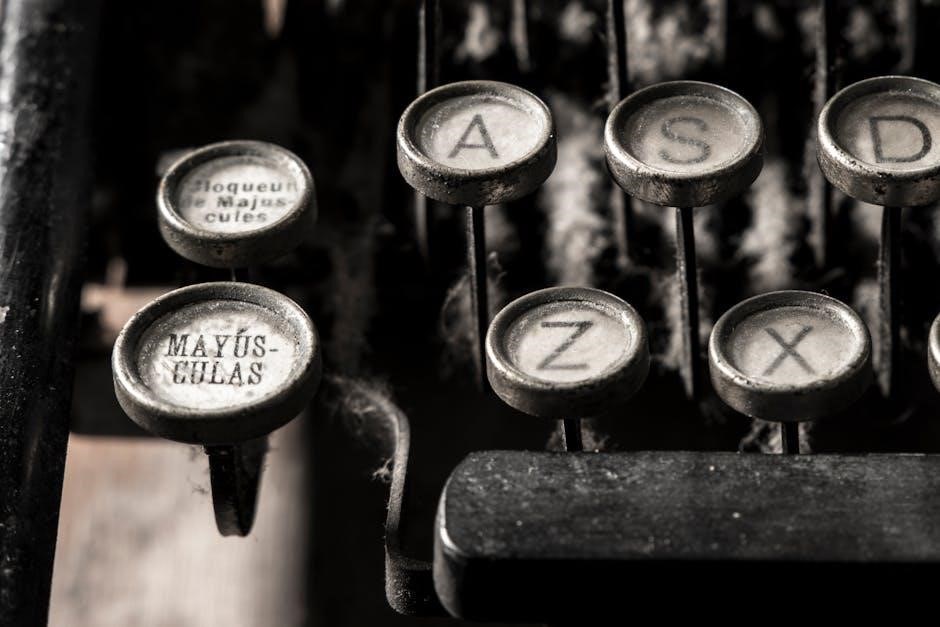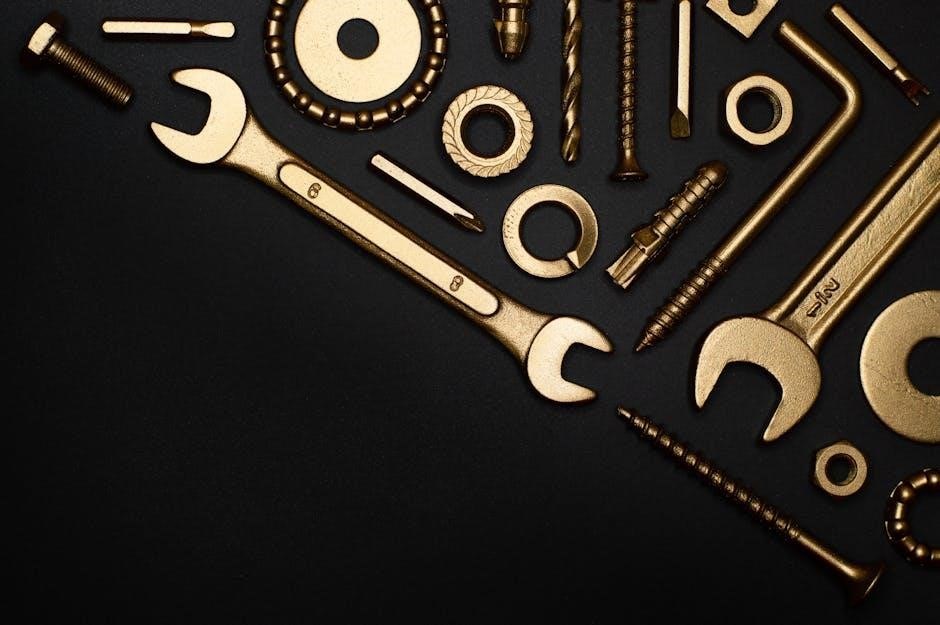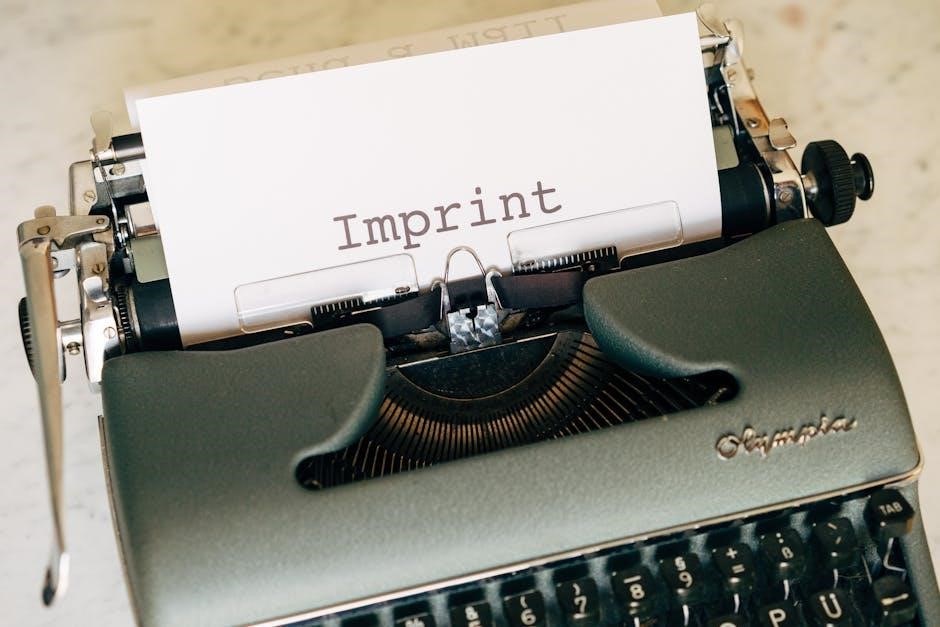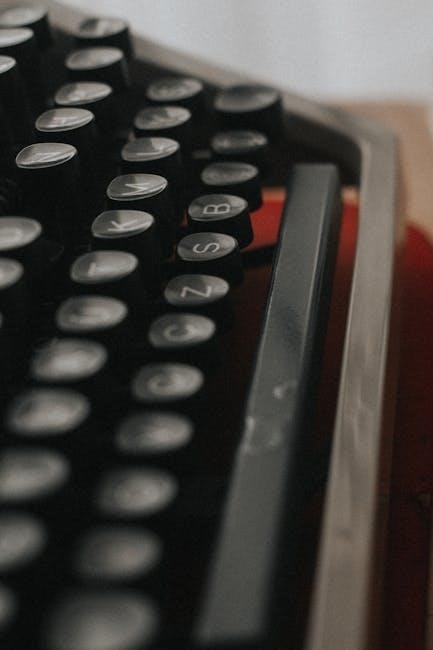Drill Press Manual: A Comprehensive Guide
Welcome to the comprehensive guide for your drill press! This manual provides vital information, from safety precautions to operating procedures. It ensures you utilize your drill press effectively and safely. Always refer to this manual before assembly, operation, or maintenance to maximize performance and longevity.
Drill press manuals are essential resources for anyone operating or maintaining a drill press. These manuals provide detailed instructions on safe operation, assembly, and maintenance, ensuring the user understands the tool’s capabilities and limitations.
Each manual typically includes safety warnings to prevent injury, guidance on selecting appropriate speeds for different materials, and instructions on securing workpieces correctly. Understanding the manual helps prevent accidents and ensures optimal performance.
Furthermore, the manuals contain troubleshooting tips, parts lists, and diagrams, which are invaluable for repairs and maintenance. Whether you are a beginner or an experienced user, familiarizing yourself with the drill press manual is crucial.
Craftsman, WEN, and other manufacturers emphasize the importance of reading and understanding the manual before using their products. These manuals often include model-specific instructions, making them a necessary reference for safe and efficient operation. Regular review of the manual will help maintain the drill press and extend its lifespan.
By following the guidelines in the drill press manual, users can ensure they operate the equipment safely, accurately, and effectively, regardless of the project at hand.
Safety Precautions and Warnings
Operating a drill press requires strict adherence to safety precautions to prevent injuries. Always read and understand the owner’s manual before assembly or operation. Wear appropriate eye protection to guard against flying debris. Never wear gloves, loose clothing, or neckties that could get caught in moving parts.
Secure the workpiece using clamps or a vise to prevent rotation during drilling. Ensure the drill press is bolted securely to a workbench to avoid movement. Keep hands clear of the drill bit’s path at all times. Use recommended speeds for the drill accessory and workpiece material to ensure safe and effective operation.
Before starting, verify that the drill bit is securely locked in the chuck and the chuck key is removed. Always lower the belt guard before turning the power on. Disconnect the drill press from the power supply before performing any maintenance or adjustments.
Regularly inspect the machine for worn or damaged parts, and replace them promptly. Ensure warning labels are visible and replace them if obscured or removed. Following these safety precautions minimizes the risk of accidents and ensures a safe working environment. Remember, safety is paramount when operating any power tool.
Assembly Instructions
Before beginning assembly, carefully unpack all components and compare them against the parts list in the manual. Ensure all parts are present and undamaged. If any parts are missing or damaged, contact customer service for assistance before proceeding.
Begin by attaching the column to the base, ensuring it is securely fastened with the provided hardware. Next, mount the drill press head onto the column, aligning it properly and tightening all bolts. Install the motor according to the manual’s instructions, ensuring proper belt alignment;
Attach the table to the column, adjusting the height and angle as needed. Secure the table locking mechanism to prevent movement during operation. Install the chuck and ensure it is tightly secured. Insert the chuck key and test the chuck’s operation.
Connect the electrical wiring according to the manual’s specifications, ensuring proper grounding. Verify that all safety guards are in place and functioning correctly. Perform a final inspection to ensure all bolts are tightened and all components are properly aligned. After completing these steps, your drill press should be fully assembled and ready for use, following all safety guidelines.
Operating Procedures
Before operating the drill press, always wear appropriate safety gear, including eye protection and hearing protection. Ensure the workpiece is securely clamped to the table using a vise or clamps. Never hold the workpiece by hand;
Select the appropriate speed for the material being drilled. Refer to the speed selection guide in the manual. Adjust the belt tension and position to achieve the desired speed. Turn on the drill press and allow it to reach full speed before beginning to drill.
Lower the drill bit slowly and steadily into the workpiece, applying consistent pressure. Avoid forcing the drill bit, as this can cause damage or injury. Use cutting fluid or lubricant when drilling metal to reduce friction and heat.
Periodically clear away chips and debris from the drilling area. Once the hole is complete, raise the drill bit and turn off the drill press. Wait for the drill bit to come to a complete stop before removing the workpiece. Inspect the finished hole for accuracy and quality. Following these procedures ensures safe and effective operation.

Speed Selection Guide
Selecting the correct speed for your drill press is crucial for achieving optimal results and ensuring the safety of both the operator and the machine. The appropriate speed depends on several factors, including the material being drilled, the size of the drill bit, and the type of drilling operation.
For harder materials like steel and cast iron, lower speeds are recommended. This prevents the drill bit from overheating and dulling prematurely. Softer materials like wood and plastic require higher speeds to achieve clean cuts and prevent chipping or tearing.
Smaller drill bits generally require higher speeds, while larger drill bits need lower speeds. Drilling larger holes at high speeds can generate excessive heat and vibration. When in doubt, start with a lower speed and gradually increase it until you achieve the desired cutting performance.
Always consult the speed selection chart provided in your drill press manual. This chart typically lists recommended speeds for various materials and drill bit sizes. Adjust the drill press speed accordingly by changing the belt position on the pulleys. Remember to always disconnect the power before making any adjustments.
Workpiece Clamping and Securing

Properly clamping and securing your workpiece is paramount for safe and accurate drilling. Never attempt to hold a workpiece by hand while operating the drill press, as this can lead to serious injury. Always use appropriate clamping devices to firmly secure the material to the drill press table.
A drill press vise is a versatile tool for holding a variety of workpiece shapes and sizes. Ensure the vise is securely fastened to the drill press table, preventing it from moving during operation. Adjust the vise jaws to firmly grip the workpiece, ensuring it cannot rotate or shift.
For larger or irregularly shaped workpieces, consider using clamps, such as C-clamps or toggle clamps. Position the clamps strategically to provide maximum support and prevent vibration. Use wooden blocks or shims to protect the workpiece surface from damage and ensure even pressure distribution.

When drilling through materials, it’s essential to support the underside of the workpiece to prevent splintering or tear-out. Use a sacrificial piece of wood or a backing board to provide a clean exit for the drill bit. Always double-check that the workpiece is securely clamped before starting the drill press.
Maintenance and Lubrication
Regular maintenance and lubrication are crucial for ensuring the longevity and optimal performance of your drill press. Before performing any maintenance, always disconnect the drill press from the power source to prevent accidental startup. Clean the drill press regularly, removing dust, debris, and accumulated grime with a brush or vacuum cleaner.
Lubricate all moving parts, such as the spindle, quill, and table adjustment mechanisms, with a high-quality machine oil or grease. Apply lubricant sparingly, avoiding excessive buildup that can attract dust and debris. Refer to the manufacturer’s recommendations for the appropriate type and frequency of lubrication.
Inspect the drive belts regularly for signs of wear, such as cracks, fraying, or stretching. Replace worn belts promptly to maintain proper speed and power transmission. Check the pulleys for alignment and ensure they are securely fastened to the motor and spindle shafts.
Periodically inspect the electrical components, including the power cord, switch, and motor, for any damage or loose connections. Replace damaged components immediately to prevent electrical hazards. Keep the chuck clean and lubricated to ensure smooth operation and prevent rust or corrosion. Proper care extends the life of your drill press.
Troubleshooting Common Issues

Encountering issues with your drill press can be frustrating, but many problems can be resolved with simple troubleshooting steps. If the drill press fails to start, first check the power cord and ensure it is securely plugged into a functioning outlet. Verify that the power switch is in the “on” position. If the motor hums but does not turn, the belt may be too tight or the motor capacitor may be faulty.
If the drill bit wobbles or vibrates excessively, check the chuck for proper tightening and ensure the drill bit is not bent or damaged. A worn or damaged chuck may need replacement. If the drill press lacks power, the belt may be slipping or the motor may be overheating. Adjust the belt tension and allow the motor to cool down before resuming operation.
Inconsistent drilling depth can be caused by a loose or misaligned depth stop. Tighten the depth stop and ensure it is properly aligned with the workpiece. If the drill bit binds or stalls during drilling, reduce the feed pressure and use a lubricant to ease the cutting process. Consult the manual for detailed solutions.
Parts List and Identification
Understanding the components of your drill press is crucial for maintenance, repairs, and ordering replacement parts. A typical drill press consists of several key parts, each with a specific function. The base provides a stable foundation for the entire machine. The column, or pillar, extends vertically from the base and supports the table and head assembly.
The table is a horizontal platform where the workpiece is placed and secured. It can usually be adjusted vertically and angled for various drilling operations. The head assembly houses the motor, pulleys, and spindle. The motor provides the power to drive the spindle, which rotates the drill bit.
Pulleys and belts are used to transmit power from the motor to the spindle and allow for speed adjustments. The chuck is attached to the end of the spindle and holds the drill bit securely. The chuck key is used to tighten and loosen the chuck jaws. Other essential parts include the depth stop, feed lever, and power switch. Familiarizing yourself with these components will aid in troubleshooting and maintaining your drill press. Consult the parts diagram in this manual for visual identification.
Chuck Key Usage and Storage
The chuck key is an essential tool for operating your drill press safely and effectively. It is used to tighten and loosen the chuck, which secures the drill bit in place. Always ensure the drill bit is properly secured before starting the drill press to prevent accidents and ensure accurate drilling.
To use the chuck key, insert it into the appropriate slot on the chuck; Rotate the key clockwise to tighten the chuck jaws around the drill bit, and counterclockwise to loosen them. Apply firm, even pressure to ensure the drill bit is held securely. Never use pliers or other tools to tighten the chuck, as this can damage the chuck and the drill bit.
After each use, immediately remove the chuck key from the chuck. Leaving the chuck key in the chuck is a major safety hazard, as it can become a projectile when the drill press is turned on. Store the chuck key in a designated location, such as a magnetic holder attached to the drill press, to prevent it from being lost or misplaced. Regularly inspect the chuck key for wear or damage, and replace it if necessary. Proper chuck key usage and storage are crucial for safe and efficient drill press operation.
Adjusting the Table Height and Angle
The drill press table’s height and angle are crucial for accurate and safe drilling. Adjusting these settings allows you to accommodate workpieces of different sizes and create angled holes. Before making any adjustments, ensure the drill press is turned off and unplugged for safety.
To adjust the table height, locate the table elevation crank or lever. Loosen the table lock mechanism, usually a clamp or bolt, and then use the crank to raise or lower the table to the desired height. Once the table is at the correct height, tighten the lock mechanism securely. Verify the table is stable before proceeding.
To adjust the table angle, first, locate the table angle adjustment bolts or levers. Loosen these, then tilt the table to the desired angle using a protractor or angle finder for accuracy. Ensure the angle is correct before tightening the adjustment bolts firmly; Double-check that the table is securely locked in place to prevent movement during operation. Regularly inspect the table locking mechanisms and adjustment hardware for wear and tear to ensure proper functionality. Correct table height and angle settings are essential for precise and safe drilling operations.
Belt Tensioning and Speed Changes
Proper belt tension is crucial for efficient power transfer and optimal drill press performance. Changing speeds on a drill press involves adjusting the belt position on the pulleys. Always disconnect the drill press from the power source before making any adjustments.
To adjust belt tension, first, locate the belt tension adjustment lever or knob, usually found near the motor mount. Loosen the tension to allow the belt to move freely between pulleys. To change speeds, refer to the speed chart on your drill press, indicating pulley combinations for different speeds. Move the belt to the desired pulley combination on both the motor and spindle pulleys.
Once the belt is in the correct position, adjust the tension lever or knob until the belt is snug but not overly tight. Proper tension prevents slippage and extends belt life. After adjusting, check the belt alignment to ensure it runs smoothly without wobbling. Secure the belt guard before reconnecting the power and operating the drill press. Regularly inspect the belt for wear, cracks, or damage, and replace it as needed to maintain optimal performance and safety. Correct belt tension and speed settings are essential for various drilling tasks.
Electrical Requirements and Safety
Understanding the electrical requirements of your drill press is paramount for safe and efficient operation. Always ensure your workshop’s electrical system meets the voltage and amperage specifications outlined in the drill press manual. Typically, drill presses operate on a standard 120V circuit, but some models may require 220V. Using the incorrect voltage can damage the motor or pose a significant safety hazard.
Before plugging in the drill press, verify that the power switch is in the “off” position. Use a dedicated circuit to prevent overloading, which can trip breakers or cause fires. Regularly inspect the power cord for any signs of wear, fraying, or damage, and replace it immediately if necessary.
Grounding is essential for electrical safety. Ensure the drill press is properly grounded to prevent electric shock. Never operate the drill press in damp or wet conditions. Always keep the work area clean and free of clutter to avoid accidents. If you are unfamiliar with electrical work, consult a qualified electrician to ensure proper installation and wiring. Adhering to these electrical guidelines ensures a safe working environment and prolongs the life of your drill press.
